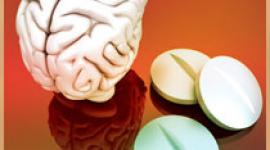Diagnostic Interview Schedule for Children (NIMH-DISC)
The first version of the instrument (DISC-1) appeared in 1983. Since then, there have been a series of updates.
 The NIMH-DISC-IV, like earlier versions of the instrument, was designed to be administered by interviewers without clinical training. Originally intended for large-scale epidemiologic surveys of children, the DISC has been used in many clinical studies, screening projects, and service settings. The interview covers DSM-IV, DSM-III-R, and ICD-10, for over thirty diagnoses. These include all common mental disorders of children and adolescents that are not dependent on specialized observation and/or test procedures.
The NIMH-DISC-IV, like earlier versions of the instrument, was designed to be administered by interviewers without clinical training. Originally intended for large-scale epidemiologic surveys of children, the DISC has been used in many clinical studies, screening projects, and service settings. The interview covers DSM-IV, DSM-III-R, and ICD-10, for over thirty diagnoses. These include all common mental disorders of children and adolescents that are not dependent on specialized observation and/or test procedures.
There are parallel parent and child versions of the instrument: the DISC-P (for parents of children ages 6-17) and the DISC-Y (for direct administration to children ages 9-17). In most instances, investigators will use both. Some investigators have used the interview with parents of four-and five-year-olds, and with youths older than seventeen.
Diagnoses
The interview is organized into six diagnostic sections: the Anxiety Disorders, Mood Disorders, Disruptive Disorders, Substance-Use Disorders, Schizophrenia, and Miscellaneous Disorders (Eating, Elimination, and so on). Each diagnosis is "self-contained," so that information from other diagnostic modules is not necessary in order to assign a diagnosis. Within each section, the diagnosis is assessed for presence within the past year and also currently (last four weeks).
The diagnostic sections are followed by an elective "whole-life" module, which assesses whether the child has ever had any diagnosis not currently present in the past year.
Questions
The DISC questions are highly structured. They are designed to be read exactly as written. Responses to DISC questions are generally limited to "yes," "no," and "sometimes" or "somewhat." There are very few open-ended responses in the DISC.
The DISC employs a branching-tree question structure. Altogether, the DISC-Y contains 2,930 questions (the DISC-P contains a few more). These fall into four categories: (1) the 358 "stem" questions asked of everyone, which are sensitive, broad questions that address essential aspects of a symptom. This structure allows the DISC to build symptom and criterion scales for all diagnoses; (2) the 1,341 "contingent" questions that are asked only if a stem or a previous contingent question is answered positively. Contingent questions are used to determine whether the symptoms meet the specification for a diagnostic criterion (e.g., frequency, duration, intensity); (3) the 732 questions that ask about age of onset, impairment, and treatment. These are only asked if a "clinically significant" number of diagnostic criteria have been endorsed (usually, just over half of those required for a diagnosis); (4) the "whole-life" module contains a total of 499 questions, also using a stem/contingent structure
Differences Between Parent (P) and Youth (Y)
The type and range of behaviors and symptoms in the DISC-P and the DISC-Y are the same. Pronouns do, of course, differ, and, if a symptom has a large subjective component, the DISC-Y might ask, "Did you feel ___?" while the parent interview will ask, "Did he seem ___?" or "Did he say that he felt ___?"
T-DISC (Teacher DISC)
The T-DISC uses questions developed for the DISC-P. It is limited to disorders whose symptoms might be expected to be observable in a school setting (i.e. disruptive disorders, certain internalizing disorders).
Administration Time
Administration time largely depends on how many symptoms are endorsed. The administration time for the whole NIMH-DISC-IV in a community population averages 70 minutes per informant, and about 90-120 minutes for known patients. Administration can be shortened by dropping diagnostic modules that are not of interest for a particular setting or study.
Scoring
The DISC is scored using a computer algorithm. Algorithms have been prepared to score both the parent and the youth versions of the DISC according to the symptom criteria listed in the DSM-IV diagnostic system. A third "combined" set integrates information from the parent and the youth. Algorithms that require both the presence of the requisite number of symptoms for each diagnosis and impairment have been prepared. Symptom and criterion scales have been created for most diagnoses. Cut points at which they best predict a diagnosis are then prepared from test data.
next: Inspirational Messages and Poems
~ all articles on anxiety self-help
~ anxiety-panic library articles
~ all anxiety disorders articles
APA Reference
Staff, H.
(2007, February 19). Diagnostic Interview Schedule for Children (NIMH-DISC), HealthyPlace. Retrieved
on 2025, December 13 from https://www.healthyplace.com/anxiety-panic/articles/diagnostic-interview-schedule-for-children-nimh-disc



